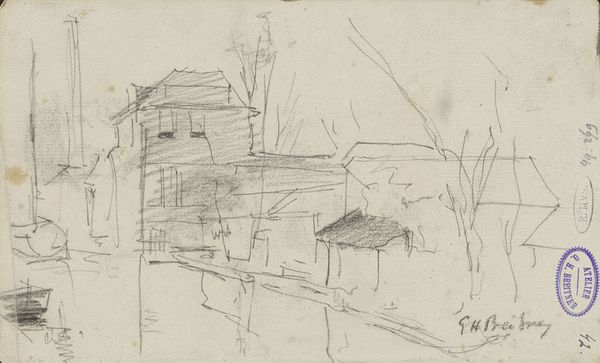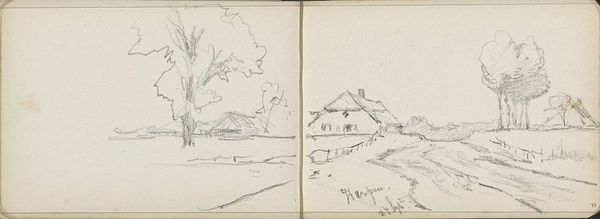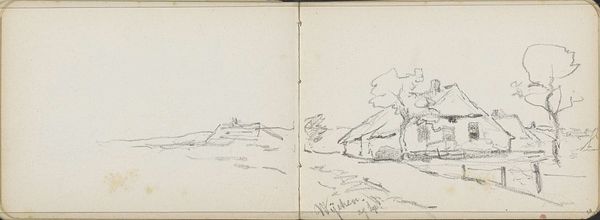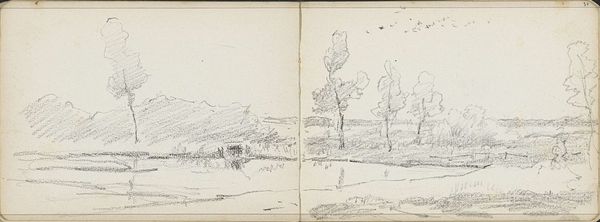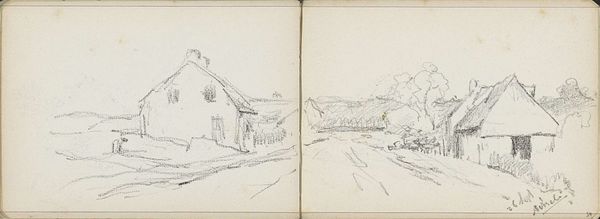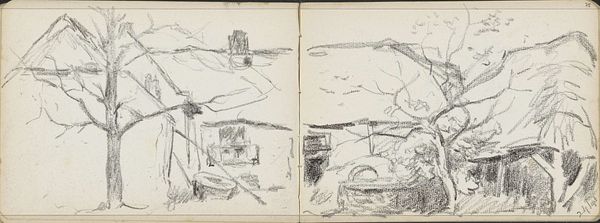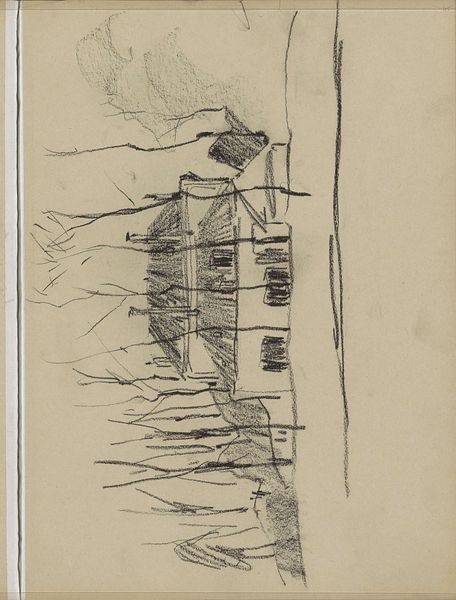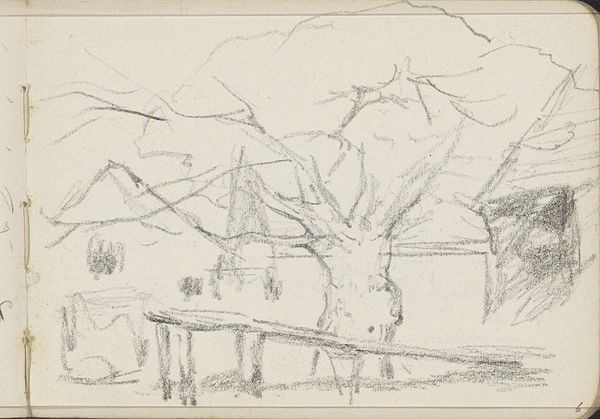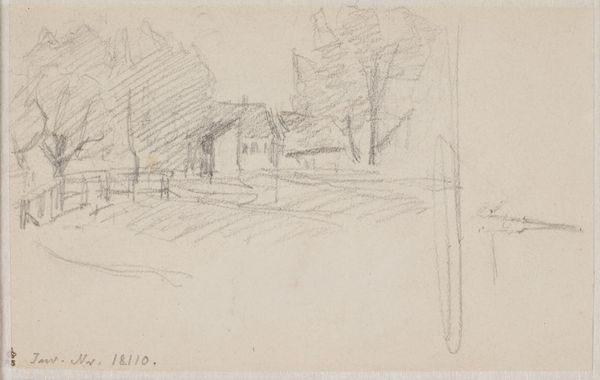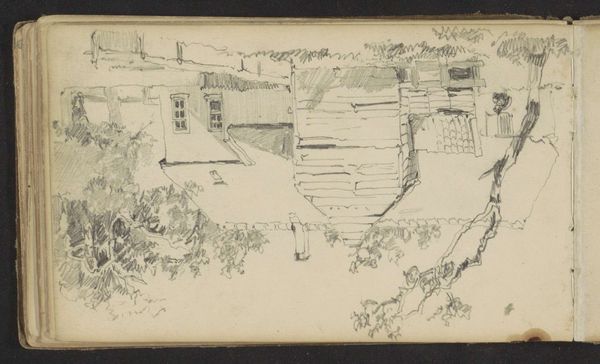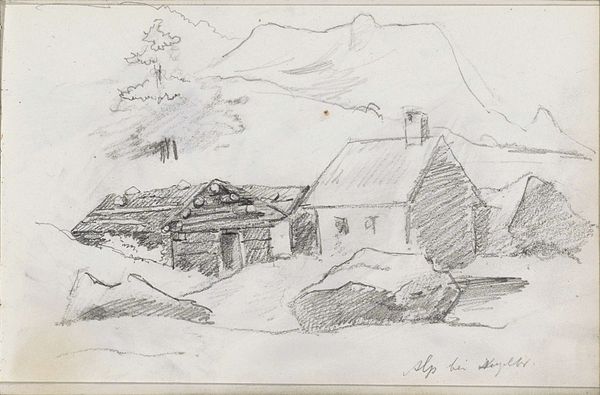
drawing, pencil
#
drawing
#
quirky sketch
#
pen sketch
#
sketch book
#
landscape
#
personal sketchbook
#
sketchwork
#
ink drawing experimentation
#
pen-ink sketch
#
pencil
#
pen work
#
sketchbook drawing
#
sketchbook art
#
realism
Copyright: Rijks Museum: Open Domain
Curator: Before us is "Watermolen aan de Dommel, vermoedelijk bij Dommelen," or "Watermill on the Dommel, probably near Dommelen," a drawing by Willem Cornelis Rip. Its creation is estimated to be somewhere between 1866 and 1929. Editor: There's an immediacy to it. I’m struck by how raw and fleeting it feels, almost like a visual note jotted down in the artist's sketchbook. Curator: Indeed, it captures a specific locale. Watermills held immense significance in Dutch society; they were essential for powering industry, milling grain, and managing waterways. The Dommel River, specifically, would have been a vital resource for communities like Dommelen. Rip's choice suggests a reverence for Dutch landscapes and infrastructure. Editor: From a formal perspective, the loose linework creates a sense of depth, doesn't it? See how the artist uses hatching to create tone, but then leaves areas intentionally unfinished, providing this incredible sense of dynamism to the overall composition. The lack of detail invites our eyes to wander and participate in the creation of the scene. Curator: The artist is part of an interesting turn-of-the-century moment as rural areas in the Netherlands underwent industrialization, and many Dutch painters and illustrators devoted themselves to representing the rural world before it was reshaped by industry. Editor: And I like the contrast. The very structured angularity of the mill and its supporting construction play so interestingly against the unbridled wildness of the trees sketched in behind. You can almost feel the force of the water as well from the very gestural lines that indicate the stream and its banks. Curator: The sketch seems more intent on capturing an authentic, fleeting impression rather than presenting the watermill in a fully embellished form, reflecting Rip's own shift away from his traditional art training. It aligns him with artists exploring more modern and less formal approaches. Editor: I see how it is not just a depiction of the place itself but of a moment in time, of observation. I was captivated by the textures that Rip suggests here—the rough wood, the foliage, the reflective water... Curator: It really emphasizes a key transitional point in both Dutch art and industry. Thank you for adding that perceptive touch! Editor: My pleasure, what a wonderfully observed image!
Comments
No comments
Be the first to comment and join the conversation on the ultimate creative platform.

